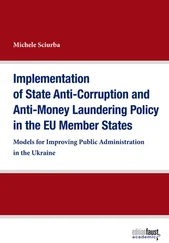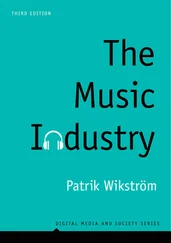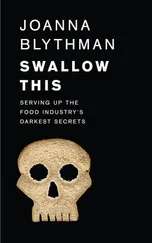While a socioeconomic analysis of the cultural and creative industries can shed light on the organizational and economic dimension of industrial industries and sectors as well as the practices and social transformations that result from them, it can also be seen as a search for the symbolic issues associated with the industries and sectors studied (Bouquillion et al. 2013).
Socioeconomic analysis is mobilized with the aim of grasping the perspectives that characterize what economists Barrère and Santagata (2005) call the “market models” (p. 91) that have replaced the “aristocratic model” (p. 84) of fashion. This socioeconomic transformation is notably governed by “a strategy of dual positioning [set up with] the control of firms by a few powerful industrial and financial groups” (Bouquillion et al. 2013, p. 112, author’s translation). It therefore appears necessary to “examine what the analysis using models makes us understand about the functioning of the sectors, their organization and the major values they convey” (Bouquillion et al. 2013, p. 153, author’s translation). Finally, socioeconomic analysis is also called upon to account for the way in which certain re-presentational policies of the fashion industry borrow models traditionally theorized within the framework of cultural or media industries. This research uses as much socioeconomic data advanced by scientific literature that addresses fashion as a creative industry or that deals more broadly with the cultural and communication industries as it does data from the activity reports of luxury fashion industry groups or data advertised in the specialized or general press.
I.8.3. Corpus (texts, objects, practices)
The corpus analyzed was composed of heterogeneous but complementary data, resulting from the communication strategies of brands and groups in the fashion industry. The communication strategies here included any practice, any object or any text – advertising campaign, ready-to-wear collection, museum exhibition – likely to produce mediation. These practices, texts and objects were selected according to two criteria established upstream and without spatiotemporal delimitation 32. The first was that of the segment: advertisers specializing in commercial luxury ready-to-wear 33. The second is that of borrowing and rewriting : the aim was to work on objects, practices and texts that witness a rewriting and an enunciative depth that explicitly or implicitly cites the fields of art, culture, religion, the sacred and politics. Some data from the specialized press were also introduced into the corpus, since they seemed to present the same communicational aim as that observed in the communicational strategies of advertisers in the fashion industry. The corpus was therefore the result of syncretic materials, such as ready-to-wear and leather goods collections, photographs from advertising campaigns, photographs taken during visits, guided or not, to museum exhibitions offered by advertisers in the sector as well as to places where the heritage of a luxury fashion brand was promoted, but also observations and photographs taken in commercial spaces (boutiques, department stores).
All of these strategies and practices were also illustrated and even discussed using discursive material from all kinds of press articles, selected according to their thematic relevance. I would like to point out that this material hardly constituted a closed corpus, subjected to systematic analysis and did not allow a representative account of the media’s position and media coverage from which the fashion industry’s re-presentational policies benefitted. On the one hand, its use was illustrative. On the other hand, it provided an overview of the place that certain advertisers occupy in the media space, including in national or regional daily press titles for which fashion is not a preferred subject. Finally, the consultation of press articles also made it possible to study, I would remind you, in an illustrative and not representative way, a possible “discursive smoothing of the forms of diversity and heterogeneity in general” (Oger and Ollivier-Yaniv 2006, author’s translation) likely to harm the image of advertisers in the sector studied.
This research was partly organized around a process of direct observation, implemented in the context of exhibitions offered by fashion brands or department stores and on the occasion of the opening of certain ateliers or group headquarters at special events. These exhibitions were visited as part of a research approach, with the aim of observing the discourses and scenographies offered throughout their visit. To put it another way, this attendance was not motivated, at least not solely, by a personal interest in fashion, but by the desire to seize the device deployed in order to enable retail advertisers to reconsider themselves and their products. From a methodological point of view, this practice of observation, which is both direct and participatory, was in line with the issues pointed out by Fontanille (2006, pp. 13–14), who notes that “the semiotic practice itself has largely exceeded textual limits, by taking an interest, for more than twenty years, in architecture, urban planning, object design, market strategies, cigar or wine tasting, and more generally in the construction of a semiotics of situations” (Fontanille, 2006, pp. 13–14, author’s translation). What I therefore call a corpus is more generally a set of heterogeneous materials, of varying levels of relevance, ranging from signs to texts, including formats, practices, situations and even strategies.
In addition to its introduction and conclusion, this book is structured by three parts and six chapters, each part comprising two chapters. I have opted for a relatively atypical structure in the way in which the various stakes of this research are presented. In the first two parts, I present re-presentation policies of the actors and groups of the fashion industry before addressing the socioeconomic stakes of the sector and the models that structure it. This choice may indeed appear to be atypical because it does not allow us to get to the heart of the matter, which is the link between the economic models of the luxury fashion industry and the way in which this industry sets itself up in order to disguise some of the constituent elements of its models and in general of its industrialization. I chose this organization based on the following observation: as ordinary spectators of fashion brands, their communication strategies and their merchandise, we are first and foremost confronted with the sector’s re-presentational policies, long before we are interested in the industrial workings that organize it 34. The fashion industry’s re-presentation policies are part of the visible, exposed and circulating face of the sector, which millions of spectators are confronted with on a daily basis 35. It is this visible face, its rewritings and its circulations that I wanted to first expose in order to report and discuss the way in which the fields of art, culture, religion, the sacred and politics are invited into the visible activities of the fashion industry. Part 1will address the processes of culturization and artification that characterize the sector’s re-presentation policies. I will look upstream at the so-called “traditional” communication and marketing strategies, such as media advertising, ready-to-wear collections and distribution strategies ( Chapter 1), while downstream I will study the way the fashion industry occupies spaces that belong to art and culture while transforming its boutiques into places with artistic aims ( Chapter 2). Part 2will address belief and engagement as they result from intertextual, anaphoric and sometimes parodic processes in the religious, sacred ( Chapter 3) and political ( Chapter 4) realms. Part 3, on the one hand, will deal with the industrialization processes of luxury fashion, its managerial creativity and the resulting dysphoric stakes ( Chapter 5); on the other hand, it will expose the mechanisms that contribute to the establishment of the symbolic and economic power of the fashion industry’s representational device through a new processing of certain elements of the corpus analyzed throughout parts 1 and 2 of this book ( Chapter 6).
Читать дальше












